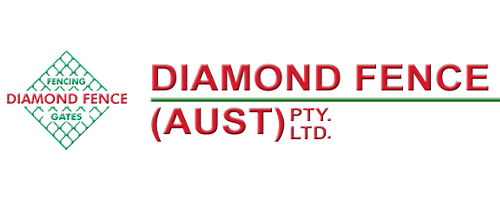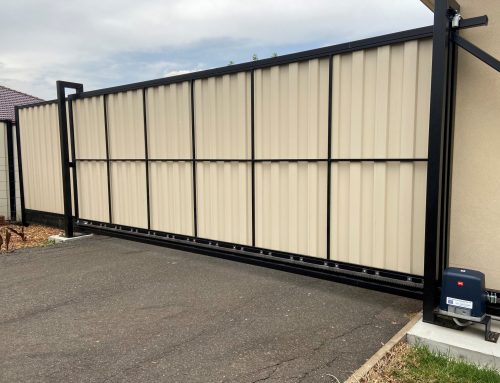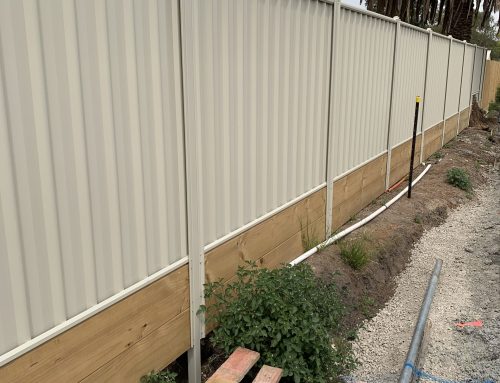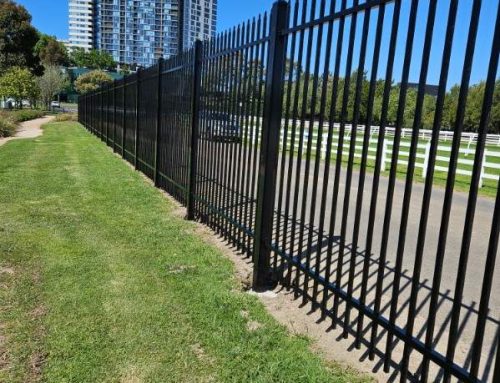Post & Rail Fencing
Iconic post and rail fencing has been preferred fencing style in many Australian rural areas. Nowadays, it’s not a surprise to discover post and rail fences in semi-urban or urban areas. It just has that high aesthetic value. How to make sure that your post and rail fence won’t lose its attractive looks? How can you be assured that the maintenance of post and rail fencing is performed properly?
Firstly, a quick recaption of what post and rail fencing is. As the name says, it is a fencing style where horizontal rails are attached to vertical posts.
The most important thing to know, when it comes to the maintenance of the post and rail fencing, is to know what material has been used for posts and rails. Is it wood, metal, aluminium or something else? The maintenance depends on that.
There are other factors involved. For example, the environment. How much moisture is in the surrounding areas? How much rain does it get? As corrosion is the main problem.
The maintenance of the post and rail fencing begins with preventative methods before the fence installation has even started. Proper installation can prevent many future problems. For example, the right installation of the posts makes sure the moisture and water won’t gather at the bottom of the posts. Also, if the posts have been installed by the specialists who know what they are doing, the posts will be installed with a precise distance and procedure to prevent moving of the posts after the installation.
Now to the maintenance of the post and rail fencing.
Let’s look at the two post and rail fencing types.
1. A complete wooden fence, meaning post and rails are made out of wood. Please note that fasteners are most likely made out of steel or some parts of plastic.
Firstly, inspect your fence to see if there’s something you notice that is out of order. Check posts and all the rails, especially the lower one, as being closer to the ground, it might be exposed to higher moisture coming from the ground, and of course, plant remains. The ideal checking would take place at least once a year.
If you find any faulty parts, you need to replace them. If anything, most likely the posts are the ones needing a replacement as the bottom part of the post is exposed to water and moisture. If installation hasn’t been done properly, the rainwater will accumulate around the wooden posts and in no time the post will start to rot.
If the wooden fence parts will begin to show any first sign of rot, they will also need to be replaced. When it comes to fence repairs, Diamond Fence can help you out.
If the condition of your wooden post and rail fencing is not that bad, the faulty parts might not need the replacement but simply a touch-up. What can you do? You can give the faulty parts or even the whole fence a new stain or coat of paint. Sand back the old paint or saint. Then we would recommend treating it before you will apply the new coating as the treatment will help the new paint to last longer.
Before starting repair works, if you decide to do it yourself, be aware of the weather as stain and paint coating needs dry weather conditions to dry. Just be mindful when planning.
2. The second post and rail fencing type is a mix of wood and steel. For example, a fence having steel posts and wooden rails. Or maybe wooden posts and steel rails. Whatever the choice, you should already know how to take care of the wooden parts from what we discussed above.
How to take care of steel parts of the fence? You may apply all the knowledge you know about taking care of a steel/metal fence.
Prevention is as important for steel fences as it is for wooden fences. Using galvanized steel will help it to last longer as the zinc coating applied during the galvanization process will help to protect against corrosion.
Powder coating is also a way to add extra protection to your steel fencing, or steel post or rails in post & rail fencing case. It will also allow you to choose the colour you like.
Maintenance of steel parts of the post and rail fencing includes making sure any vines, grass or weeds growing around the post, or rails if they have been installed close to the ground, are removed.
Also, when discovering rust, you need to remove it with a wire brush (not the heavy corded wire). Then rinse it with nonionic detergent and water and let it dry.
You will also need to use a rust converter. Just be careful when applying it as all the manufacturer safety instructions should be followed step by step.
Once that is done, you will need to apply a thin coat of primer. When buying a primer, make sure that it is meant for metal. You can ask for the correct primer from a sales rep, they should be able to help you out. There are a few choices out there. For example, brush-on or spray-on application. The most convenient choice would be to use the spray-on application as it will allow the paint to be applied to the crevices.
Once the primer has dried off, apply a finish coat, also meant for metal (oil-based). You should be able to find a similar colour that your fence. If not, then one way would be to contact the fence installer that did the installation job and they should be able to get the colour you need.
The above will help you if you need to repair your fence once it has been damaged. After, you will need to show some love and care to your fence. You can do that by washing it with soap and water every six months or so. Applying a thin layer of metal-grade wax will also help to protect the paint surface of the metal parts of the post and rail fence.
If you need post and rail fence repairs or installation, Diamond Fence is here to help you out. Call us on (03) 9753 4566, shoot us an email on info@diamondfence.com.au, or just get a FREE online quote.








